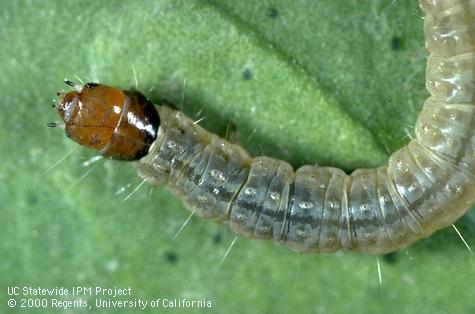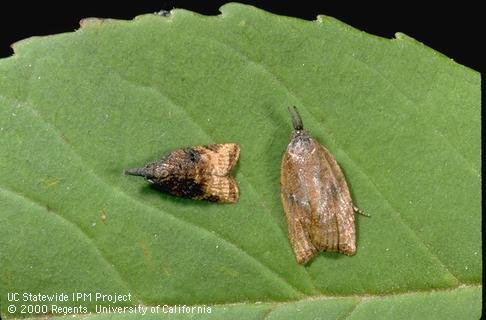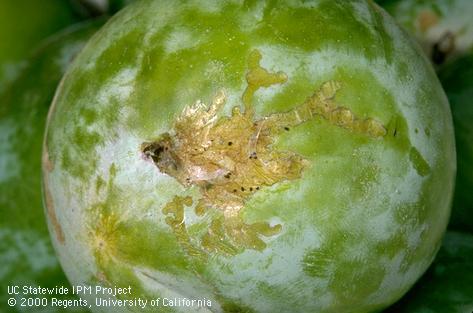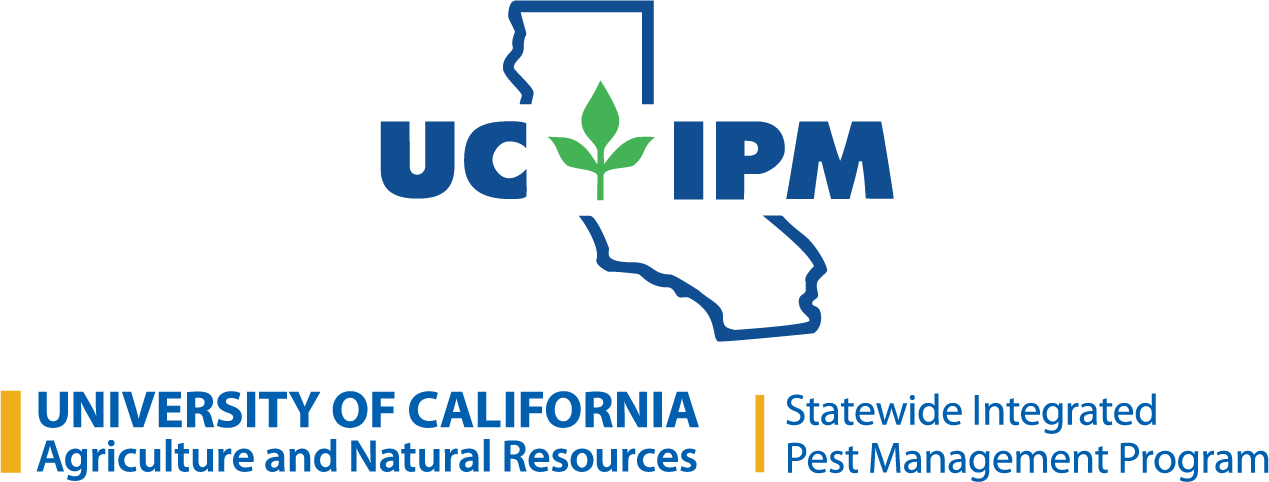Omnivorous leafroller (Tortricidae) larvae (caterpillars) mostly feed on foliage within nests they build by tying leaves or leaves and fruit together with silk webbing.

Identification
Correctly identify the cause of damage before taking action. The biology and management of leafrollers differs from that of other caterpillarlike insects. Various other insects can cause damage that resembles caterpillar chewing, but these other insects do not produce silk strands or webbing. Other leafroller species may occur on the same plant.
Omnivorous leafroller larvae have a brown to cream-colored or greenish-brown body up to 3/5 inch long. Larvae have a black or brown head and prothoracic shield, the area just behind the head and on the top and sides of the first abdominal segment. Through the translucent cuticle (outer covering) the main blood vessel running along the back is often visible as a faint dark stripe. The mounds (tubercles) at the base of the bristles along the top and sides are chalky white.
Adults are small, dark-brown moths up to 1/2 inch long with a dark band on the wing and a distinct snout. At rest adults appear bell shaped, as do those of other tortricid species.

Life Cycle
Larvae develop through five increasingly larger instars (immature growth stages). Each caterpillar may construct multiple leafroll nests and at maturity pupate inside the nest or on bark in a thin, silken cocoon. Adult females lay eggs overlapping in flat masses, resembling fish scales on leaves or bark. There are up to five or six generations per year in warm interior valleys.

Damage
Omnivorous leafroller feeds on many hosts, including caneberries, fruit and nut trees, grapes, and various ornamentals and weeds. When they feed between leaves and fruit, they can cause substantial fruit scarring.

Solutions
Conserve natural enemies, which often keep leafroller populations low. Parasitic wasps and tachinid flies are especially common in leafroller larvae and pupae. Trichogramma parasites kill some eggs. Assassin bugs, green lacewing larvae, ground beetles and certain other beetles, and spiders are common predators.
Clean up gardens by removing weeds that can be alternate hosts of leafroller larvae. Eliminate plant debris that can harbor pupae. Hand removal of webbed leaves and larvae can help control leafrollers on small plants.
Otherwise healthy plants tolerate the loss of some leaves. Low numbers of leafrollers do not warrant insecticide application. A properly timed foliar spray of Bacillus thuringiensis (Bt) or spinosad controls leafroller larvae. Bacillus thuringiensis kills only caterpillars (butterfly and moth larvae) that feed on sprayed foliage. A second application of Bt about 7 to 10 days after the first is recommended because of its short persistence.
Spinosad can adversely affect bees and certain natural enemies. Because it is toxic to bees for several hours after the spray has dried, do not apply spinosad to plants that are flowering.
References
For more information, see Pest Notes: Leafrollers on Ornamental and Fruit Trees.
